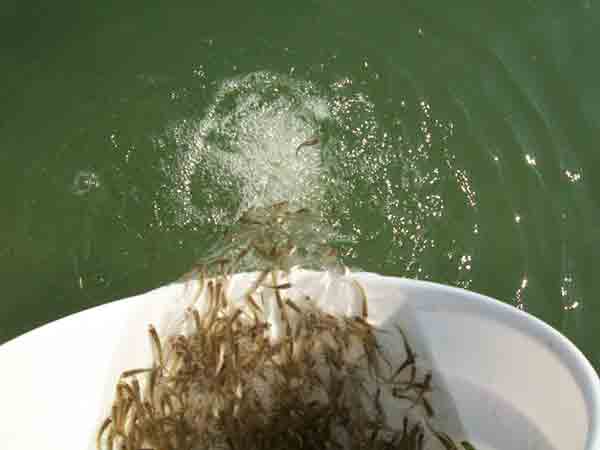By Louie Stout
 Michigan River Walleyes Are Reproducing
Michigan River Walleyes Are Reproducing
Veteran walleye anglers have contended for years that walleyes always have reproduced naturally in the St. Joseph River.
While there might be some of that in Indiana waters, Hoosier biologists say they have yet to find very many.
They know this because they do young-of-the-year surveys every fall while assessing how previous stockings have gone. They encounter fish they have stocked but no additional youngsters.
The situation must be different in Michigan’s lower St. Joe waters.
Michigan DNR studies conducted the past couple of years reveal a growing number of naturally produced walleye in Michigan’s section of the St. Joe.
In fact, the most recent observation indicated as much as 50 percent of the fish biologists captured have been naturally reproduced.
How can fish managers tell the difference?
Every young walleye stocked since 2012 has been marked. Each fall the biologists conduct an electro-shocking study to assess how that year’s stocked fish are surviving. Each fish is examined for marks that would indicate what year they were stocked.
Samples are taken below the Niles and Buchanan dams and four different sites on the Berrien Springs stretch down to where the river empties into Lake Michigan.
Of the walleyes Michigan captured last year, only 47 percent were marked.
“We knew there was some natural reproduction, but certainly didn’t know there was that much of it going on,” said Michigan fisheries biologist Brian Gunderman.
Gunderman confesses that a few of those fish might be young fish stocked by Indiana. Indiana also marks its fish, but there were a couple of years that were missed.
“I don’t think we had enough movement from Indiana to influence study,” he said. “It’s easy to say 50 percent were wild fish.”
Biologists also discovered that the majority of the naturally produced walleyes were captured in the tailwaters below the dams.
“I would imagine that’s due to the rocky habitat,” said Gunderman.
He also noted that the year class of naturally produced fish paralleled years of good survival of stocked fish.
“That tells me that environmental factors (weather, high water, etc.) are a big factor to young walleye survival,” he explained.
The research also proved what biologists have known for years – a lot of fish stocked in one impoundment get swept over the downstream dam into the next impoundment. Oddly enough, it’s usually the 1- and 2- year old fish that get carried off in the current. Gunderman surmises that the young of the year fish tend to hang tight to cover during their early months in the river before they start wandering and get swept over dams.
“Based on the marked fish we saw, at least 59 of the marked walleyes we found below Berrien Springs dam came from impoundments above there,” he said.
That could explain why Berrien typically produces the best walleye fishing on the river. But there’s another factor, adds Gunderman.
We noticed the fish below the Berrien Dam grow significantly better,” he noted. “We think it’s because of the immediate access to Lake Michigan and a lot of food moves into the river from the lake. That’s not to say that walleye growth in impoundments above Berrien isn’t good. It is. It’s just considerably better in the lower river.”
Even with the discovery of natural reproduction, Michigan has no plans to cut its biennial stocking on the lower river.
“We know that a cut in stocking would have a noticeable impact on fishing and we don’t want to do that,” Gunderman said. “We’ve got a pretty good river walleye fishery and we want to keep it that way. Any natural reproduction we’re getting is enhancing that.”





